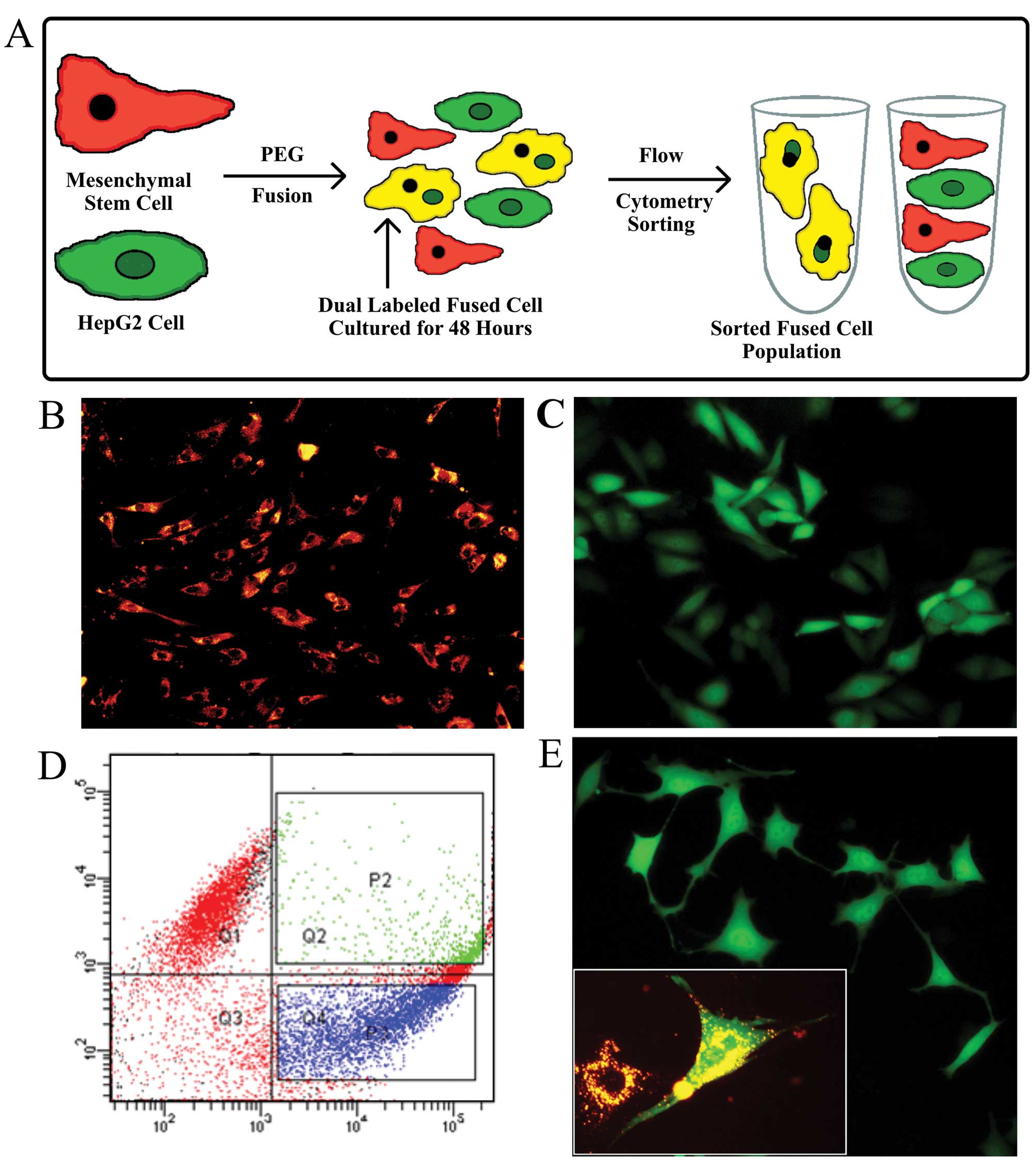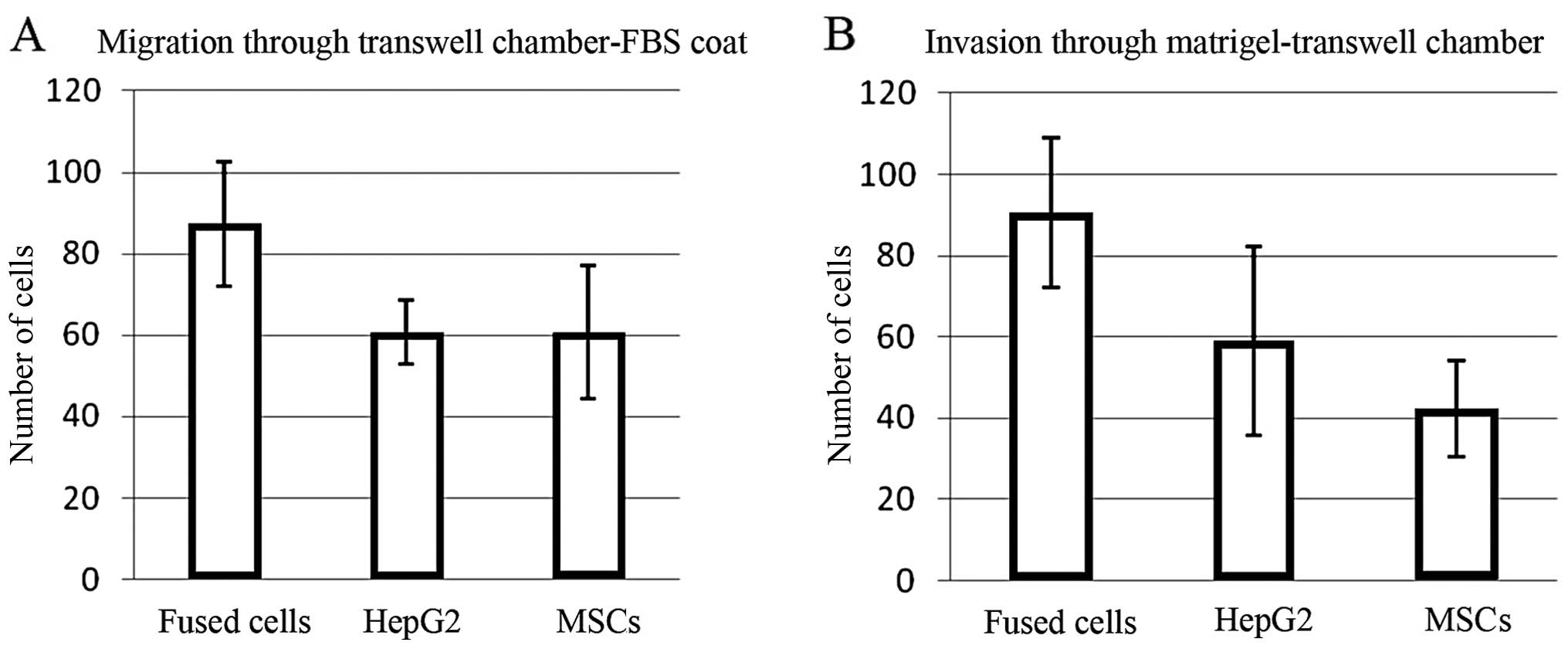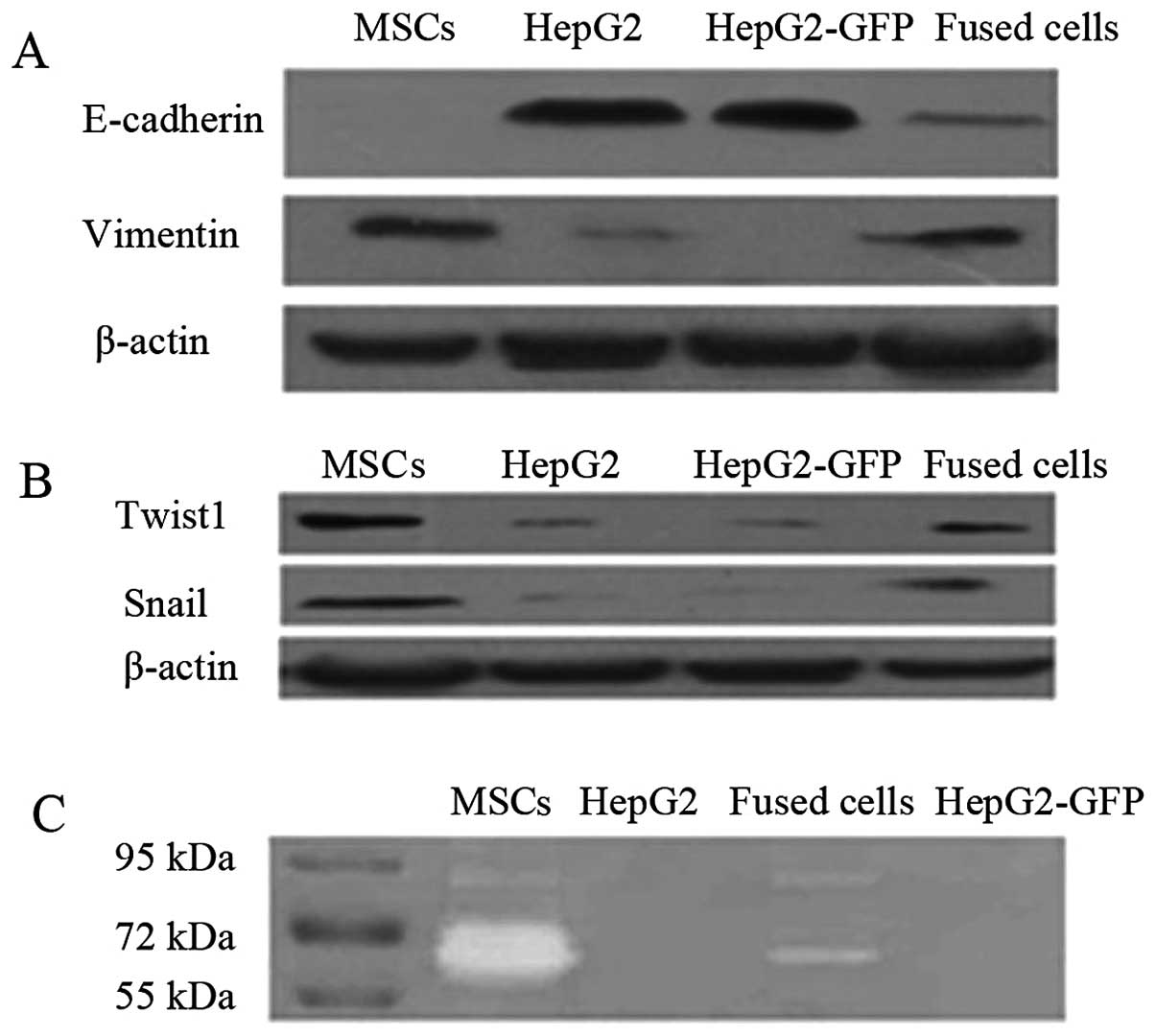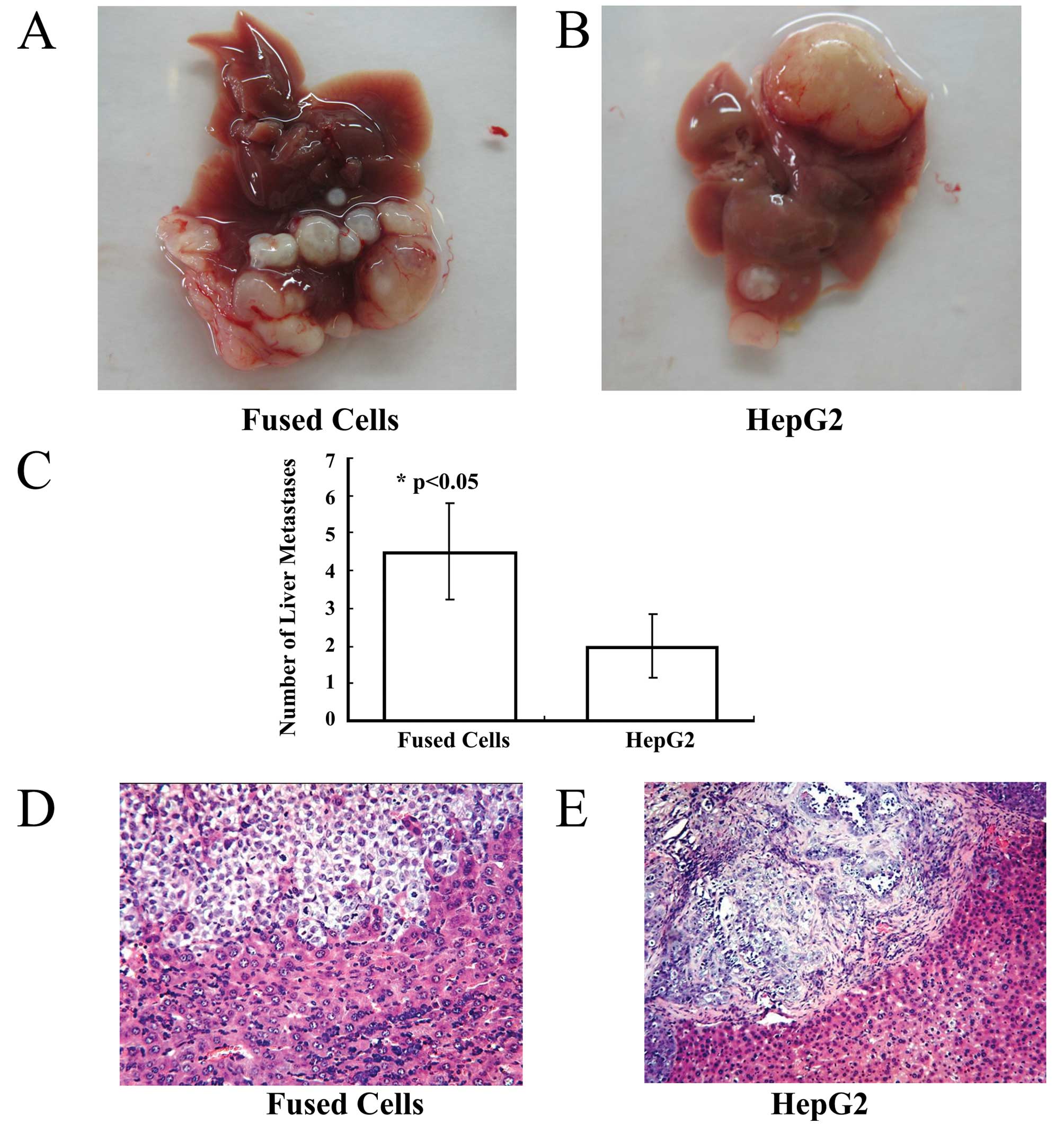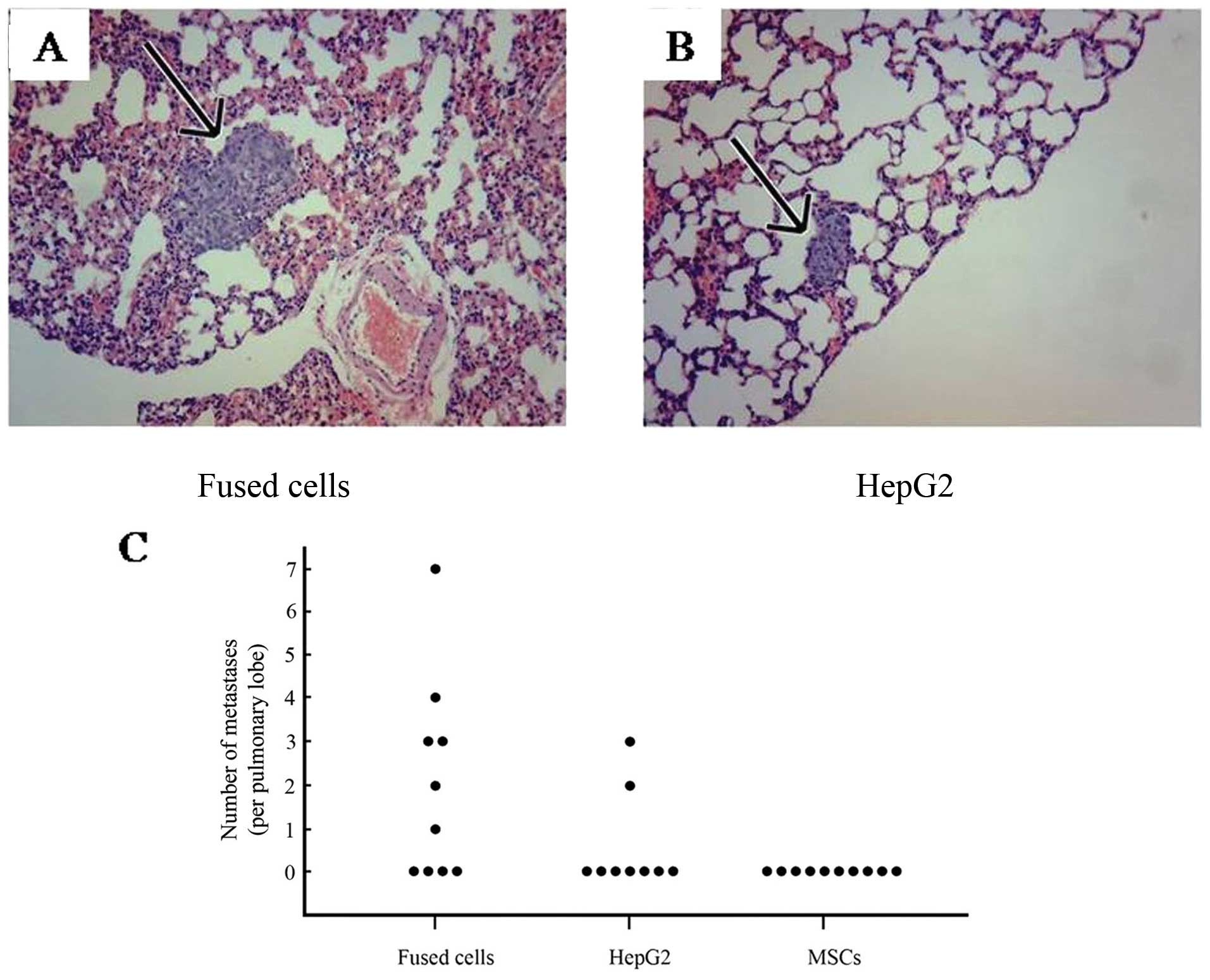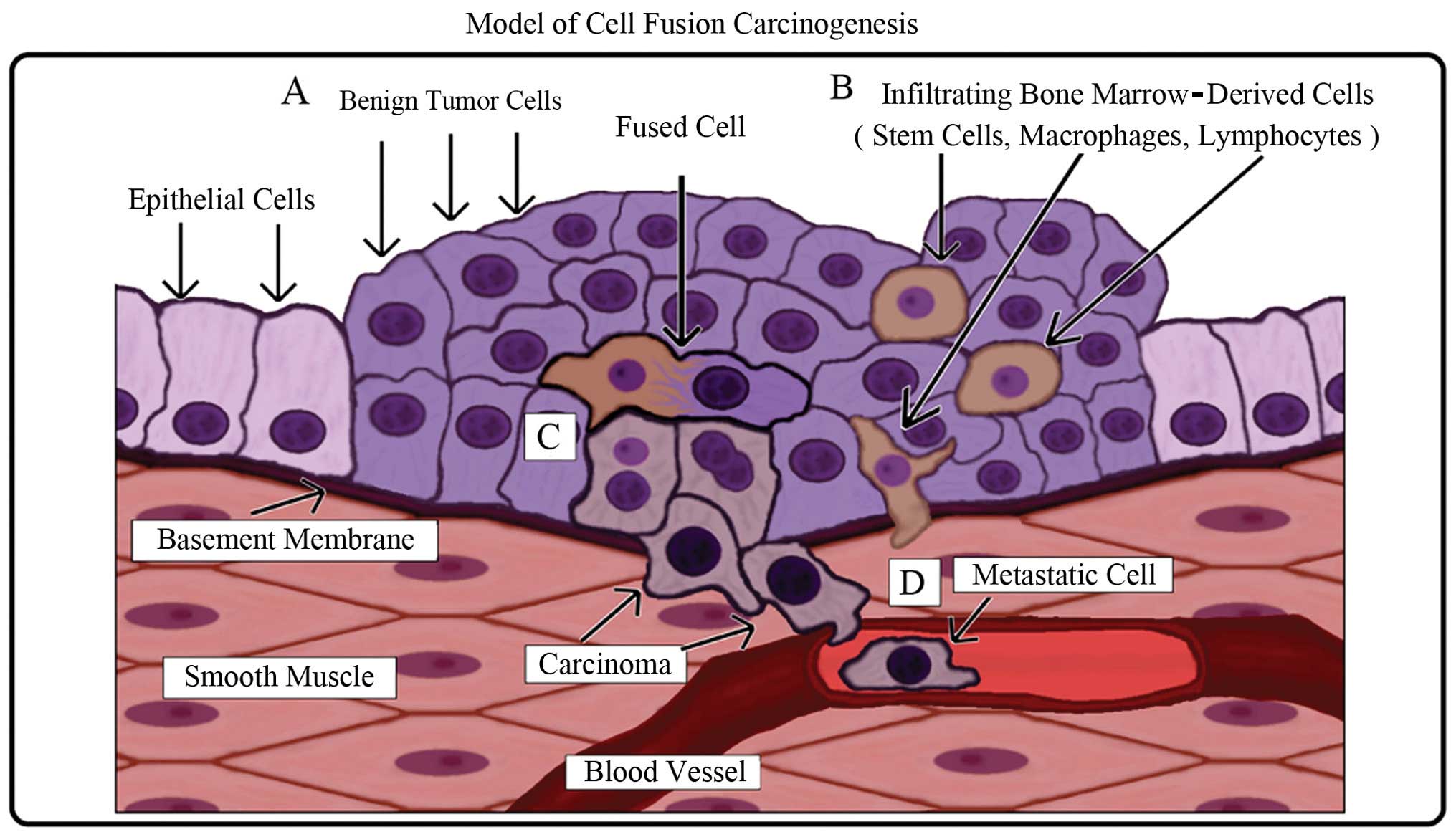Spandidos Publications style
Li H, Feng Z, Tsang TC, Tang T, Jia X, He X, Pennington ME, Badowski MS, Liu AK, Chen D, Chen D, et al: Fusion of HepG2 cells with mesenchymal stem cells increases cancer‑associated and malignant properties: An in vivo metastasis model. Oncol Rep 32: 539-547, 2014.
APA
Li, H., Feng, Z., Tsang, T.C., Tang, T., Jia, X., He, X. ... Meade-Tollin, L.C. (2014). Fusion of HepG2 cells with mesenchymal stem cells increases cancer‑associated and malignant properties: An in vivo metastasis model. Oncology Reports, 32, 539-547. https://doi.org/10.3892/or.2014.3264
MLA
Li, H., Feng, Z., Tsang, T. C., Tang, T., Jia, X., He, X., Pennington, M. E., Badowski, M. S., Liu, A. K., Chen, D., Harris, D. T., Martinez, J., Meade-Tollin, L. C."Fusion of HepG2 cells with mesenchymal stem cells increases cancer‑associated and malignant properties: An in vivo metastasis model". Oncology Reports 32.2 (2014): 539-547.
Chicago
Li, H., Feng, Z., Tsang, T. C., Tang, T., Jia, X., He, X., Pennington, M. E., Badowski, M. S., Liu, A. K., Chen, D., Harris, D. T., Martinez, J., Meade-Tollin, L. C."Fusion of HepG2 cells with mesenchymal stem cells increases cancer‑associated and malignant properties: An in vivo metastasis model". Oncology Reports 32, no. 2 (2014): 539-547. https://doi.org/10.3892/or.2014.3264















